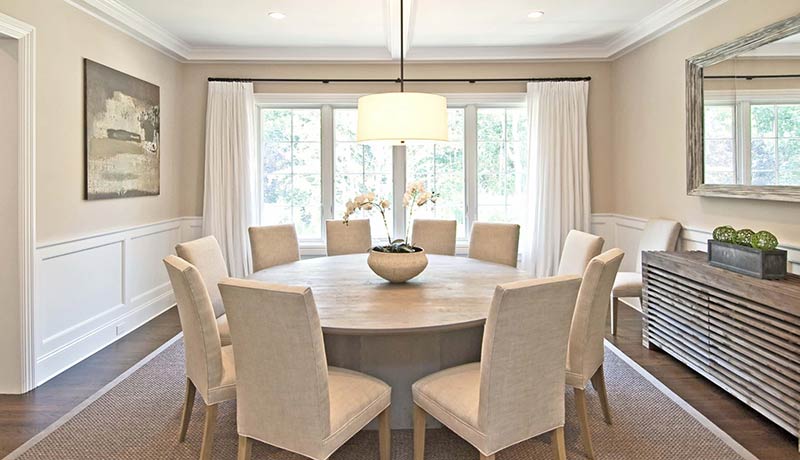As we learned in part one of the benefits of home staging, there are numerous benefits to home staging. Not only will it allow your home to look more enticing to prospective home buyers, but it will help your home to sell faster. This is because your home is set up to make your home look bigger, more expensive, and allow prospective buyers to picture themselves in the space. In the second part of this series, we’ll go over common questions that people have when it comes to home staging.
When to Hire a Home Stager
The best time to hire a home stager is prior to listing your property. Waiting until your property has been lagging on the market is usually too late. While stagers recommend clearing away pieces from the home that won’t be making the move, many recommend not doing anything else, like painting or decluttering, until they visit your home. You could pick an unsavory new paint color that has to be painted over or remove too many items that then have to be replaced with staged pieces, which can add to the cost.
Cost
Home staging costs vary widely and tend to fluctuate with location, scope of work, and ease of access. Some home stagers charge based on square footage. The National Association of Realtors’ 2015 Profile on Home Staging cites $675 as the median spent on home staging, but projects can range from a couple hundred to thousands of dollars.
Staged projects tend not only to recoup the initial investment but to generate more profit. For 2015 Madison Modern Home’s data show that their clients received more than $6 for every $1 spent on staging — and more than half the homes they staged that year sold for more than their initial asking price. On average, staged homes sell for an average of 17 percent more than nonstaged homes, according to a survey by the International Association of Home Staging Professionals and StagedHomes.com.
The cost of staging will always be less than the cost of your first price reduction on your asking price.
Insurance
Professional home stagers should have comprehensive insurance to guard against any damages made to your home during the staging and destaging processes. Likewise, the client would be responsible, either personally or through homeowner’s insurance, for any damages made to the staged furnishings. It’s a good idea to check the coverage of your homeowner’s insurance policy and discuss with the home stager his or her insurance coverage. Also, it’s wise to verify a stager’s insurance and business licenses before you hire anyone.
Which Rooms Are Most Important to Stage?
While it’s ideal to stage all the rooms in your house, your budget might not stretch that far. If you can do only a room or two, rooms should be staged in this order of priority, according to the NAR 2015 Profile of Home Staging: living room, kitchen, master bedroom, dining room, bathrooms, children’s rooms, guest bedrooms.
It’s also important not to forget tiny or unused spaces. A rarely used attic space can be staged to look like a home office or playroom for the kids.
Process and What to Expect
An initial in-home appointment with a professional stager usually lasts between one and three hours. The stager will likely take photos and may draw a simple floor plan. He or she will determine what should stay, what should go into storage, what items might be moved to different locations, and will assess the property’s general readiness to be staged. The home stager will also discuss timing, availability, and supply an estimate, usually after a couple of days.
If the proposal is approved, a contract will be drawn up and a staging day scheduled. Staging typically takes one day, but large properties can require more time. The home will be destaged after it has been sold or as per the contract.
It’s a good idea to interview more than one home staging company, look at all of their portfolios and ask for references from previous clients.
What Items Typically Are Not Included in Staging?
This can vary with different home stagers and based on whether the property is occupied, but most do not supply window treatments, bedding, towels, or live plants.
Any suggested updates, like painting and new flooring, are typically paid for and arranged by the homeowner. However, the staging professional may recommend paint colors or other products.
Homeowners are responsible for cleaning the home prior to staging as well as for the duration of the contract. The tasks of packing, moving, and securing a storage facility for belongings that will not remain in the home during the staging period are the homeowner’s obligation as well.
What About Staging a Home With Pets?
Most professional stagers won’t stage in homes with cats for fear of scratched furniture. Some stagers do not work in homes with any pets. Others will stage a home with animals only if they are kept out of the staged rooms. The issue of pets is an important point to discuss with your home staging professional.
What to Do Before a Stager Arrives
- Give your home a thorough, “white glove” deep cleaning. You can hire a local professional cleaning service if you need extra help. A Google search of cleaning companies in Grass Valley will help you find the one for you.
- Fix anything broken or easily improved — oil squeaky hinges, for instance.
- Replace lightbulbs or at least make sure all of your fixtures have working bulbs and the illumination is consistent.
- Weed and mulch your flower beds, especially in front of the home, for curb appeal. You’ll make a good impression before potential buyers even reach the front door.
- Pack away superfluous family photos on display. Keeping a few out is OK, but too many pictures dampens the “I could see myself living here” reaction of potential buyers.
While not every house on the market will need to be staged, home staging helps a lot of people sell their homes quickly. Staging your home with a professional stager can make it look more appealing to potential buyers. Your home will still look like your home, but it will also help buyers picture themselves in that home. If you are worried about cost or effectiveness of a home stager, give them a call. You’ll never know what they have to offer unless you ask.
Of course, you can always contact Coldwell Banker Grass Roots Realty if you want more information about listing your home. We are always here to help.





